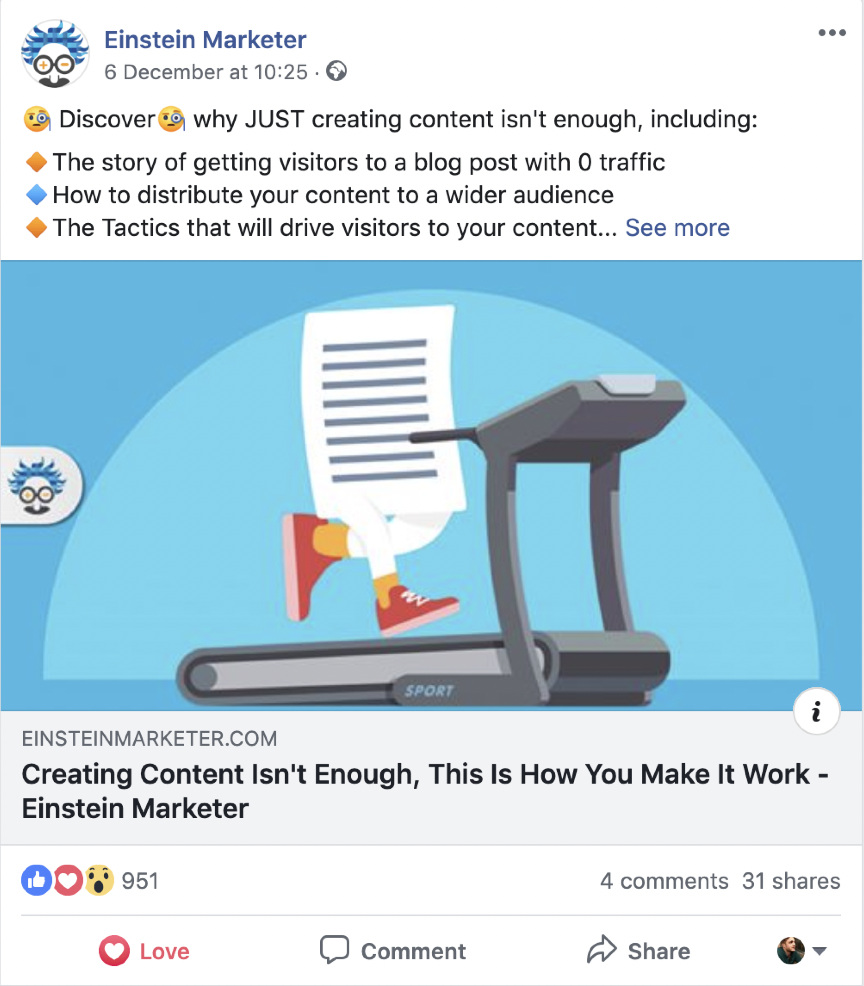What was the last banner ad you clicked on?
OK, I’ll make it a little easier, what was the last banner ad you saw?
Don’t worry, you haven’t got a memory like a sieve.
Your memory didn’t even get a chance to recall it, because like the huge majority of internet users, you suffer from ad blindness.
BTW: A banner ad is a form of advertising placed on a website (NOT social networks), with the intention of promoting and driving traffic to an external source.
Here’s a classic webpage, that’s been riddled with banner ads:

This is probably one of the only times you’ve ever actively looked for banner ads. That’s because, over time and experience, you’ve programmed yourself to avoid them.
After 1,000’s and 1,000’s visual interactions with them, you’ve learnt that they don’t have any value and therefore, you now treat them with automatic ignorance.
Our attention is automatically fixed on the value of the page (the content), whilst we completely ignore page surroundings like banner ads (because we have memorised its lack of value).
This automatic ignorance is called ad blindness.
Contents
Ad Blindness: If It Doesn’t Work, Why Are People Still Advertising?
Banner ads only charge advertisers when they’re clicked on (it can be a long wait between invoices!) making them appear cheap.
Especially when you consider that the average industry CTR (click-through-rate) of banner ads is 0.06%.
That’s 6 in every 10,000 people!

With performance stats like that, of course, banner ads seem like a bargain.
But businesses still buy them. In fact, one of the biggest buyers of banner ads, are well-known brands. The percentages aren’t much better for these businesses, but they eliminate a huge problem that this type of advertising (banner ads) creates…
…trust.
It’s OK for the Coca-Cola’s, IKEA’S and Nike’s of this world, because they are considered credible and established, but what happens when small/medium-sized businesses run banner ads?
According to BannerSnack, 54% of users (who see the ads) don’t click because they don’t trust them, and 33% of internet users find display (banner) ads completely intolerable!

So, even if your ad can somehow break the programmed response we know as ad blindness, it probably won’t be clicked anyway.
In fact, it might even have an adverse effect on your brand.
BTW: 18-34-year-olds have the highest levels of ad blindness. These people are the present and future of internet users!
Ad Blindness: Is There a Better Way?
Unless you’ve been hiding under a rock (or you’re completely new to digital advertising), you’ll know that Social Media ads have been tearing a hole in the advertising world. In particular, Facebook ads.
The world’s biggest social network has taken the game to the next level with highly-targeted campaigns that can find audiences with specific demographics, interests and behaviours…
…as well as reaching people who have interacted with your website or social profile and even people who have similar interests (and behaviours) to your other audiences!
But as always, the proof is in the pudding, so let’s take a look at a few tasty numbers:
- Facebook ads average a CTR (click-through-rate) that is 275% greater than banner ads
- Facebook ads yield 216% higher revenue per click than banner ads

Ad Blindness: How to Improve Your Banner Ad Stats
So, after all those crazy numbers, you still want to improve your banner ads?
Cool, I’ve got an awesome tip for you:
Take your banner ads down and invest in an advertising strategy that works.

Yes, there are ways to improve your ads, like creating eye-catching images, hitting your audience’s pain points, writing better copy and placing them in the middle of content (so your audience can’t avoid them)…
…but what’s the point?
You can take all those techniques and apply them to Social Media ads: gain more traffic, generate greater sales and ultimately, give your business a much chance of success!
Conclusion
We’re in the results game, the same as you…
…if something doesn’t work (even after extensive testing), we cut it out of our strategy.
And with ad blindness increasing and huge levels of distrust held in banner ads, I strongly recommend moving away from this near-ancient advertising strategy.
Focus on things that are driving results in 2022: social media ads, conversations with your audience, content marketing, storytelling, funnel building and nurturing a loyal following
- Author Details




